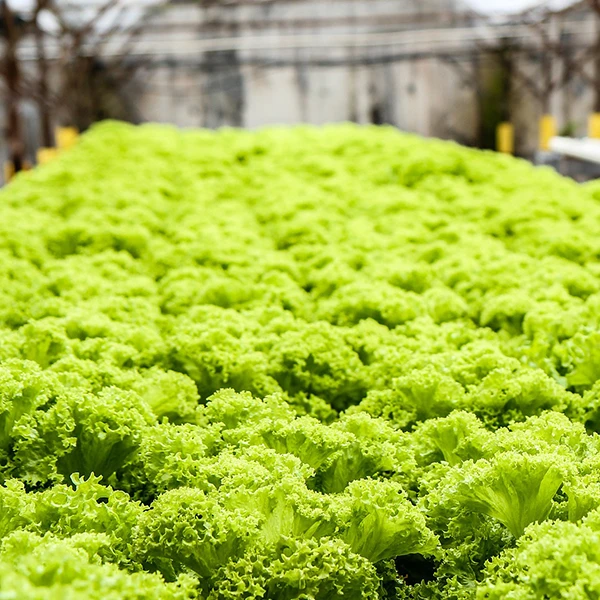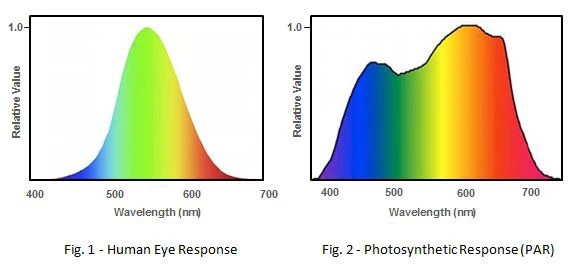Horticulture Lighting

Light is a vital environmental factor for plant growth. It drives photosynthesis (the process of converting light energy to chemical energy in plant), photomorphogenesis (plant development process that is controlled by light), and photoperiodism (plant recognition of light and darkness that affects its flowering schedule). Plant growth and development is greatly influenced by both the quantity and quality of light.
Quantity
Lux and lumen are photometric units and they are used to measure the intensity and total amount of visible light emitted by a light source. They are used to determine maximum light levels and light transmission loss within a greenhouse.
Fig.1 shows the human eye’s response to different wavelengths of visible light (400nm to 700nm), while Fig.2 shows the photosynthetic response of plant, which is governed by Photosynthetically Active Radiation (PAR) (PAR is the range of wavelength plants are able to use in the process of photosynthesis). Since human visual response does not correlate with photosynthetic response, PAR measurement, also known as quantum measurement, is used for quantitative analysis of photoperiodism and is expressed in units of photon flux (mol m−2s−1) or energy flux (W/m2).

Quality
There are different types of light receptors in plants and each type of light receptors caters to a specific range of wavelength. Light quality is mainly sensed by these light receptors.
Chlorophylls are the most important photoreceptors during photosynthesis while phytochromes, cryptocromes, and phototropins are the most important photoreceptors during photomorphogenesis. Phytochrome are responsible for the red light; cryptochrome recognizes the blue, green and UV-A light; while phototropin perceives blue light.
LEDs as supplemental light for greenhouse
Before LEDs with specific spectrums were available, it was a challenge to find out the optimal wavelength plants need for photosynthesis. Traditional light sources like metal halide or high pressure sodium lamp would require inefficient filters for horticulturalists to study the effects of different spectrums on plants. However, with LED lightings, it is now possible to discover the optimal spectral output needed for photosynthesis and apply it to the grow lights (artificial light source designed to stimulate plant growth) required at every stage of a crop’s growth and development.
To measure the amount of energy present in light source for photosynthesis and photomorphogenesis, a spectroradiometer or spectral irradiance meter can be used. These instruments provide spectral data of light sources and are useful for studying and designing lightings for photosynthesis and photomorphogenesis.
For more information on light measuring instruments, please visit Konica Minolta website at https://sensing.konicaminolta.asia/applications/light-measurement/ or you can contact us at +65 6895 8685 or email us at ssg@gcp.konicaminolta.com.
About the Author: Garie Xu
Garie Xu is the Sales Engineer of Konica Minolta Sensing Singapore Pte Ltd. Graduated from a manufacturing engineering background, he is mainly involved in sales, seminar, training and coaching in the field of light and color management. With his prior 3 years’ experience in the oil and gas industry and 2 years in Konica Minolta, he is providing solutions to the many industrial applications. He has also conducted seminars and workshops to educate the industry on instrumentation technologies and color science.

